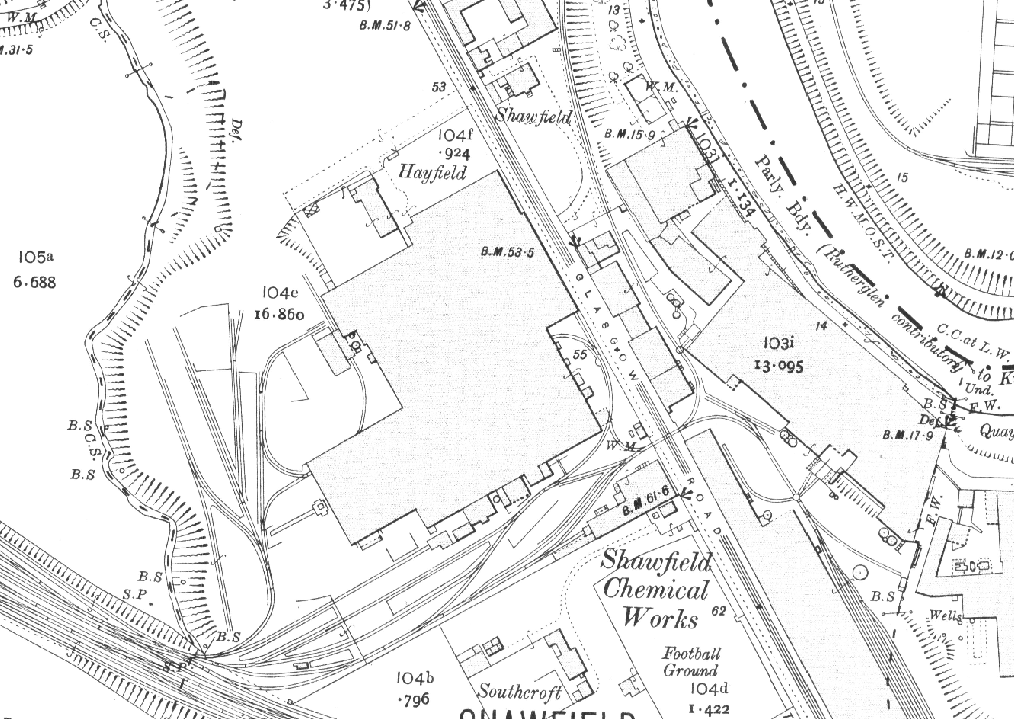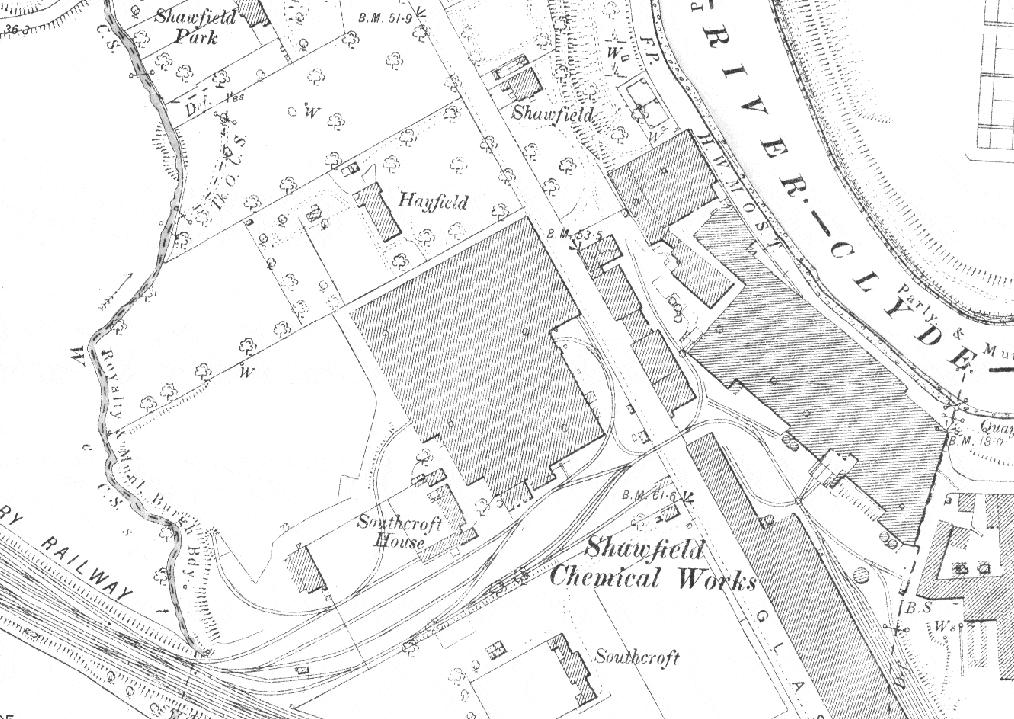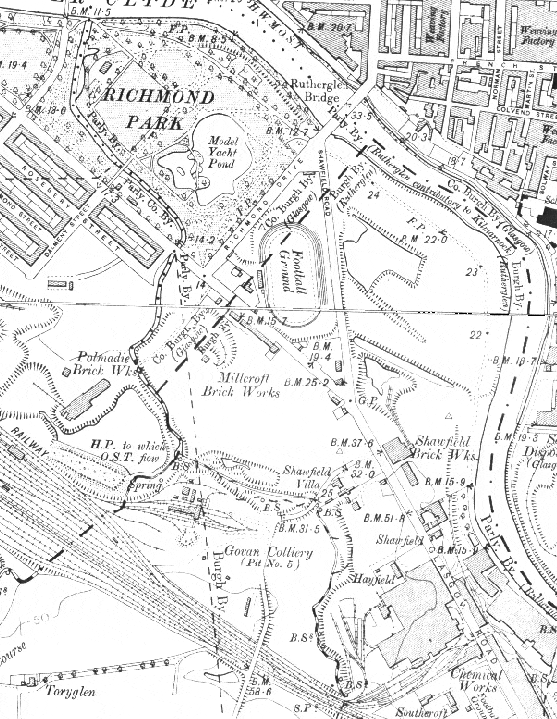‘Toxic’ Glasgow burn under investigation. What can historical maps reveal.

Last week the Scottish Environment Protection Agency was called to investigate a ‘toxic’ Glasgow burn that was pictured glowing luminous yellow.
Clyde Gateway, who are undertaking remedial works to address the polluted burn, previously warned politicians that contaminated land nearby the river posed an immediate risk to human health.
The striking colour in the burn is considered likely to be the result of Chromium VI contamination from the former JJ White Chemical Works (aka Shawfield Chemical Works), which closed in 1969. Given the length of time since the factory was closed and demolished, it seems likely that the factory itself was not the only source of contamination, so we took a look at the maps to find out more.

Shawfield, 1913
West Burn runs past the old Shawfield Chemical Works, then merges with Mallsmire Burn to form Polmadie Burn underneath what is now an industrial estate off Southcroft Road. West Burn and Polmadie Burn were culverted between 1968 and 1977 and the only above ground section is now where it emerges into Richmond Park about 800m downstream of the former Shawfield Chemical Works.

Close up view of Shawfield Works between 1898 and 1977
One thing that immediately caught the eye was the ‘landscaping’ which can be seen on the land between the works and West Burn. On OS maps this symbology looks similar to innocent earthworks undertaken for levelling, flood protection etc, but in proximity to a large chemical works raises alarm bells, as do the rail lines extending further and further out into these areas, which were likely used for transporting waste to be dumped.Old clay pits (later infilled, refuse tips and unidentified heaps can be seen across the burn and extending far to the north of the works itself. It brings to mind similar widespread issues around the former alkali works in Widnes and the surrounding area.
Looking at the history of the site itself it seems clear that the owners had a disregard not only for the wider environment but very little concern for the workers at the site itself, with workers forced to work 12 hour shifts, seven days a week, with no meal breaks, and workers forced to eat whenever they could find a moment, entirely contaminated with chrome dust. ‘Chrome holes’ in the skin, perforated septums, lung cancer, digestive disorders and skin diseases were not uncommon among the workforce, and prompted a scathing series of articles from the leader of the nascent Labour Party leader Kier Hardie.
Investigations have found that not only was the area around the works used to dump Chromium VI-contaminated waste, but they quickly ran out of room within the confined of the works area and up to 2.5 million tonnes of waste materials had been discarded at locations in the local vicinity, including being used to form the spectator bankings at the nearby Southcroft Park football ground. Recent estimates for the remediation of the site and affected areas is around £54m.

Wider view of the works and affected burns between 1910 and 1995
Even on this very superficial site overview it’s clear that we always need to consider the land around industrial sites as well as the active works themselves, particularly for high risk land uses with the potential to generate large amounts of waste. One day the burn will eventually run clear, but the effects may yet live on further.
You can read more about the recent issues here: https://www.glasgowtimes.co.uk/news/19260608.sepa-called-investigate-toxic-glasgow-burn/
Groundsure reports highlight potential contaminated land issues and inform on the next steps to deal with said issues. Visit our website to find out more about our environmental search reports.
Additional information
Date:
Apr 30, 2021
Author:
Drew Hardy

